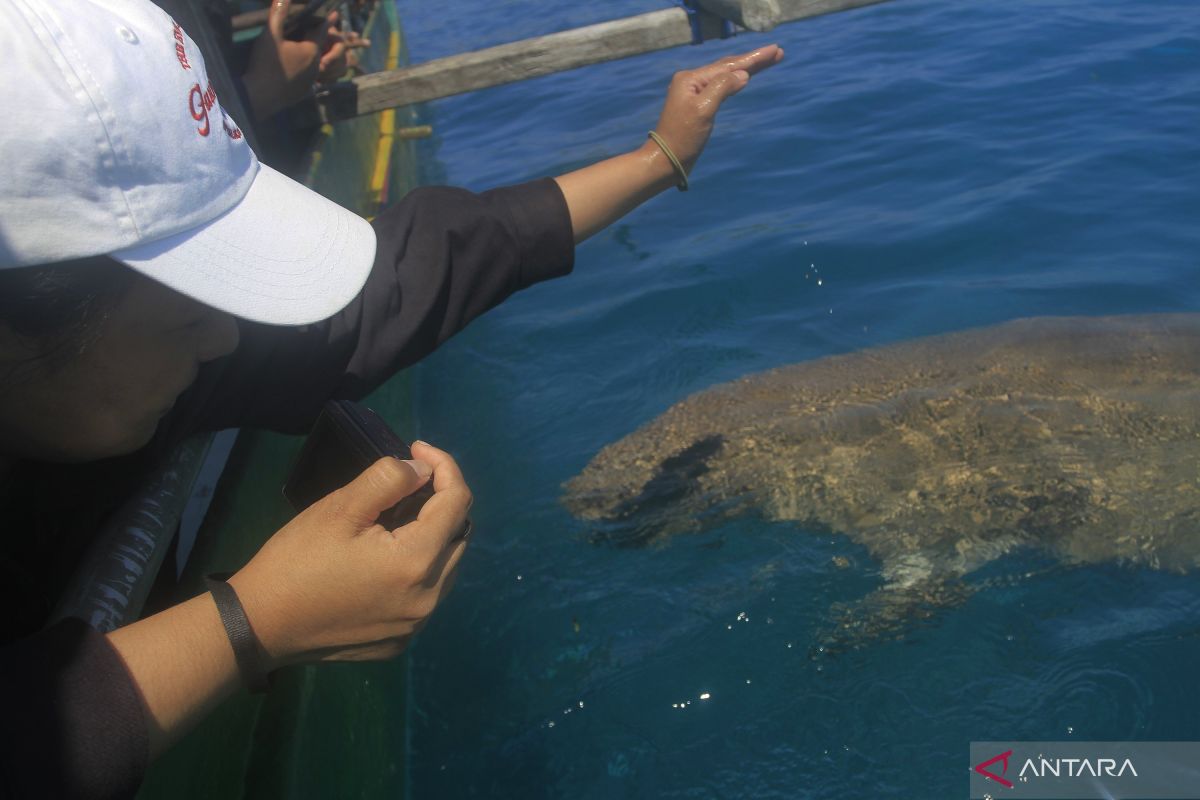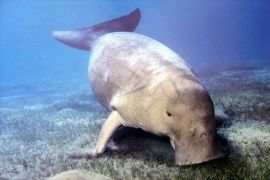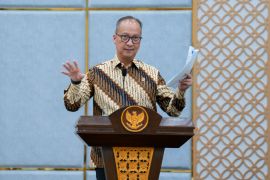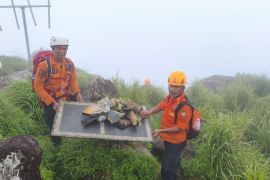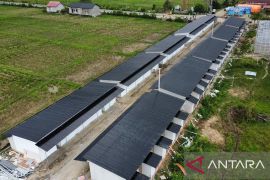The sun's rays were scorching though the clock had only shown 9:30 a.m. Central Indonesia Time (WITA), with the air temperature on the smartphone application showing 31 degrees Celsius.
Meanwhile, at a corner of the beach, several fishers were casually chatting in some lopo houses generally used by tourists visiting the beach.
Lopo is a traditional house of the Abui people in Alor District, NTT, which has several functions.
The panorama of the clear blue waters, with the blowing sea breeze, is an everyday sight for the fishers and seaweed farmers in Kabola Sub-district.
"We are waiting for tourists who want to see Mawar," according to Anton, a 32-year-old fisher who offers a service to accompany tourists keen on seeing Mawar, a dugong living in the Alor waters.
Mawar's presence is a blessing for the local residents whose income earlier depended on fishing, as they can now get additional income from accompanying tourists to see the mammal.
Fishers accompanying tourists to see Mawar can earn an additional Rp2 million (around US$128.46) to Rp3 million (around US$192.69) per month. During the peak season, their income can also reach Rp4 million (around US$256.92 million).
Nevertheless, they must bear the costs, such as for the local area conservation and tourism area maintenance.
The presence of the dugong symbolizes friendship between humans and nature on Alor Island. The fishers take good care of Mawar.
Moreover, 16 fishers in the area have formed a Community Monitoring Group (Pokmaswas) named Sinar Kabola to guard and care for the marine habitat in the area where the dugong is often sighted.
The group has been actively participating in supporting the branch office of the Marine and Fisheries Office of East Nusa Tenggara Province for the Alor Area to conduct community-based surveillance.
The leader of Sinar Kabola Pokmaswas, Sardin Lotang, stated that the group's task is to preserve the area where the dugong usually plays.
The area, managed by the Regional Technical Implementation Unit of the Alor District Marine and Fisheries Office, is part of a conservation area known as the Alor Islands Aquatic Park, NTT.
In addition to guarding and preserving the area to make it a safe area for fish and dugongs, the group is also tasked with maintaining the coastline to keep it clean.
Under the monitoring of the Tourism Office of Alor District, the fishers have agreed on the price for tourists eager to see the dugong in person.
For domestic tourists, the cost of entering the beach area and seeing the dugong is Rp150 thousand (around US$9.63) for one boat that can accommodate four to five people.
Meanwhile, foreign tourists must pay Rp200 thousand (around US$12.85) to charter a boat and have 30 minutes to see the dugong, the duration for which has been agreed upon by fishers operating the boats.
Dugong watching is a popular attraction among tourists.
When they see humans, Dugongs generally hide deeper in the water. However, Mawar, a male dugong, appears on the surface and is friendly with humans.
When people call out his name, Mawar appears on the surface and follows the boat of tourists.
According to data from the Sinar Kabola Pokmaswas, two dugongs are currently spotted in the Kabola waters, precisely on Sikka Island, which is often a place for the species to play and eat.
Of the two, only one, namely Mawar, often shows himself on the surface.
Alor waters are known as a breeding location for dugongs, as almost all coastal areas of Alor Island have meadows of seagrass, which dugongs feed on.
Seagrass is also found on the beaches of Mali and Dere, so the two dugongs use them as a playground.
"Actually, there are many dugongs in Alor but (it is) only Mawar who dares (to come to the surface)," branch office head of the Marine and Fisheries Office of Alor District, Muhammad Saleh Goro, remarked.
To this end, the office prohibits tourists from touching Mawar, let alone swimming with him.
The presence of dugongs is a selling point for the region's tourism. To this end, almost every year, the local government holds a during-calling festival to promote the island's tourism potential.
Head of the Alor Tourism Office Muhammad Baesaku stated that the dugong is not the sole tourism appeal of the area. Alor has vast tourism potential in the form of its cultural, marine, and religious aspects. Moreover, the Alor Marine Park is famous for snorkeling and diving.
Indeed, dugong is important for the region's tourism appeal. To this end, protecting dugongs in the area is necessary to prevent them from disappearing from the Alor waters.
Related news: Marine pollution affects dugong habitat in Riau islands water: Official
Translator: Kornelis Kaha, Raka Adji
Editor: Azis Kurmala
Copyright © ANTARA 2024
